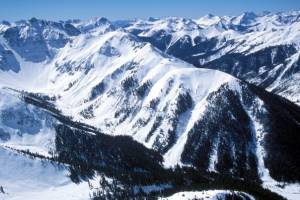Silverton, CO – A group of backcountry skiers triggered an avalanche near Colorado’s Silverton Mountain ski area on Saturday, leaving one dead and one injured.

Peter Carver, 23, of Durango, Colo., died in the slide, which occurred on federally-owned Bureau of Land Management (BLM) land about a mile and a half from of the hamlet of Gladstone, just outside the Silverton Mountain boundary. John Duncan Rothwell, 53, also of Durango, suffered what is suspected to be a fractured femur. The third member of the group, identified as Nate Klema, 23, of Durango, was uninjured.
The Colorado Avalanche Information Center (CAIC) reports that the incident occurred in an area known as the Clothesline Path, on a southeast aspect along the Cement Creek drainage off the Corkscrew Pass Road. The convex slope that broke into old snow is located at an elevation of 11,690 feet in the San Juan Mountains. Klema was the third skier to descend Clothesline and triggered the slide, burying Carver and partially burying Rothwell. Although Klema was himself partially buried, he managed to extricate himself and assist Rothwell, who was injured from being driven up against a tree.
The body of Carver was located using avalanche beacons, unresponsive, not breathing and without a pulse under five feet of snow. Ski patrol from nearby Silverton Mountain provided assistance and transport for Rothwell.
Saturday’s incident near Silverton was only one of numerous avalanches across Colorado over the weekend. The CAIC reported a total of 41 slides from the Wyoming border to Silverton, including one near Berthoud Pass that required a backcountry rescue. The organization had rated the avalanche danger as “Considerable” in the Northern San Juans on Saturday, on all aspects and at all elevations.
“The current snowpack across Colorado is in a delicate state of balance,” CAIC forecaster Scott Toepfer said on Sunday morning following the accident. “Before the last storm cycle moved across the state the base layers of the snow were exceptionally weak. The new snow during the storm came in with significant wind and a high water content, meaning the new snow was heavy, and developed quickly into dangerous slabs.”

